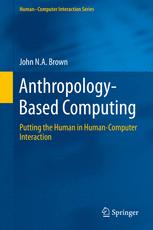

Most ebook files are in PDF format, so you can easily read them using various software such as Foxit Reader or directly on the Google Chrome browser.
Some ebook files are released by publishers in other formats such as .awz, .mobi, .epub, .fb2, etc. You may need to install specific software to read these formats on mobile/PC, such as Calibre.
Please read the tutorial at this link: https://ebookbell.com/faq
We offer FREE conversion to the popular formats you request; however, this may take some time. Therefore, right after payment, please email us, and we will try to provide the service as quickly as possible.
For some exceptional file formats or broken links (if any), please refrain from opening any disputes. Instead, email us first, and we will try to assist within a maximum of 6 hours.
EbookBell Team

4.8
64 reviewsWe have always built tools to improve our productivity and help us lead better lives; however we find ourselves constantly battling against our new computerized tools, making us less productive and putting our health and our lives at risk. This book looks at Human-Computer Interaction (HCI) from a truly human-centred perspective; focusing on human physiology and psychology rather than the motley series of brilliant innovations, glorified mistakes, and cross-generational habits that comprise the computer-centred HCI that we practice today.
This three-part guide argues that human interest and calm technology need to be at the heart of HCI. It begins by exposing the inherent dangers in past and present HCI. Using his past experiences within Anthropology, Linguistics, Education, Ergonomics, Human Factors, and Computer Science the author introduces and explores the theory of ‘Anthropology-Based Computing’ (ABC) as well as a new ideas like Dynamic Environmental Focus (DEF), a new model of General Human Interaction (GHI), and a new triune model of the brain: Brown’s Representation of Anthropogenic Interaction in Natural Settings (BRAINS). Detailed illustrations show how HCI can be improved by considering how human bodies and brains actually work. The final part is a series of simple illustrated experiments, each applying an aspect of ABC to improve the way our computers and computerized devices treat us.
Anthropology-Based Computing is written for those who work with computers, not just those who work on them. Students and researchers in Design and Psychology, and Computer Scientists as well, will benefit from seeing what is missing from the devices that are already in place, why that is, and how to make the practical changes that will immediately improve the physiological and psychological experience of using phones, on-board navigation systems, and the countless other computers we use at work and at home today and will continue to use in the future.